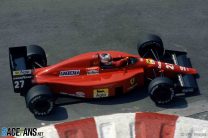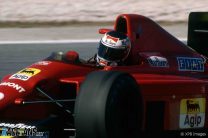The Ferrari 640, built for the 1989 Formula 1 season, was an important car for the team which introduced some major technical changes.
This was partly due to Formula 1’s new technical regulations. The turbo era had ended, and teams were now required to run normally aspirated engines of 3.5-litre capacity. They were free to choice their configuration, however, and Ferrari opted for a V12 engine layout.However star designer John Barnard, who had been lured away from McLaren in time to develop the new car, had other innovations up his sleeve. One made a dramatic change to both motorsport and, eventually, motoring.
The Ferrari 640 was the first Formula 1 car to sport a semi-automatic gearbox. Barnard did away with a convention clutch and H-pattern gear shift, and gave the drivers a pair of paddles situated behind the steering wheel to change up and down gears.
The new system gave a lot of trouble in testing. So much so that new driver Nigel Mansell had little faith it would go the distance in the season-opening Brazilian Grand Prix. But it did, and after problems for the two McLaren drivers Mansell was astonished to win his first race as a Ferrari driver.
Reliability was the car’s most significant weakness over the course of the season, however, which prevented the team providing a consistent challenge to McLaren. But when the 640 ran well it was usually their biggest threat.
Mansell, the last driver to be hired by founder Enzo Ferrari prior to his death the previous year, gave the team a second win at the Hungaroring before the year was over. Gerhard Berger missed a race after sustaining burns in a huge, fiery crash at Imola, but rebounded later in the year to add a third win for the 640 at Estoril.
Advert | Become a RaceFans supporter and













